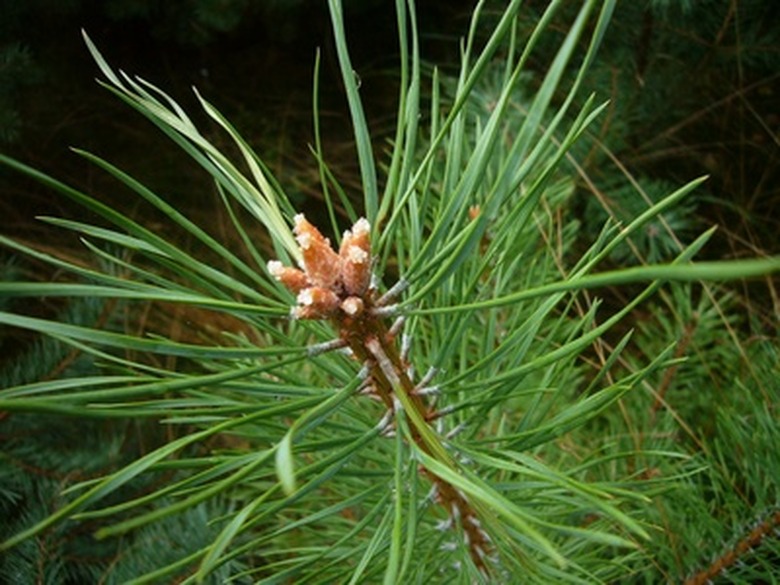Pine Tree Needle Diseases
Pine tree needle diseases are caused by fungal pathogens. The infection results in the defoliation and discoloration of conifer needles. Both reduce the tree's overall health. Early identification and removal of infected areas is the best method of control. Highly susceptible conifer tree species in high-risk environments, such as Scotch pine growing in moist, shady areas, may benefit from preventive fungicide treatments.
Lophodermium Needle Cast
Lophodermium Needle Cast disease, caused by the fungi Lophodermium seditiosum, affects Austrian, red and Scotch pine tree species. This pine needle disease is identified by small brown spots with yellow halos occurring in late fall. Eventually, the needles turn, brown and fall off, leaving the pine tree with sparse tufts of green needles. This fungi. spread from tree to tree by the wind, can infect large quantities of trees.
- Pine tree needle diseases are caused by fungal pathogens.
- Lophodermium Needle Cast disease, caused by the fungi Lophodermium seditiosum, affects Austrian, red and Scotch pine tree species.
Brown Spot Needle Blight
Scotch, Austrian, Virginia, red and Eastern white pine tree species are susceptible to Brown Spot Needle Blight, an infection caused by the fungi Mycosphaerella dearnessii. Small black spots occur on the needles during late summer, eventually turning brown and falling off in late fall and early spring. This fungi spreads quickly in warm, wet climates and can effectively defoliate a smaller pine tree in two to three seasons.
Naemacyclus Needle Cast
Caused by the fungi Cyclaneusma minus, Naemacyclus Needle Cast commonly infects white, Scotch, Virginia, Austrian and Mugo pine tree species. This disease is identified by light green spots occurring on older needles in late fall. As the disease progresses, the needles turn yellow, then brown and, finally, fall off. Unlike other pine tree needle diseases, Naemacyclus has no effect on first-year needles.
- Scotch, Austrian, Virginia, red and Eastern white pine tree species are susceptible to Brown Spot Needle Blight, an infection caused by the fungi Mycosphaerella dearnessii.
- Caused by the fungi Cyclaneusma minus, Naemacyclus Needle Cast commonly infects white, Scotch, Virginia, Austrian and Mugo pine tree species.
Diseased Pine Trees
Needle blight, caused by various fungi, causes the tips to die back and can turn needles tan or pink. Maintain proper cultural care and prune the tree's canopy to enhance air circulation, because these fungi prefer moisture and high humidity. Mushrooms at the base of the tree are symptomatic of armillaria. Eventually, the pine tree may die. Healthy trees can recover on their own. Cankers are sunken, dead areas on stems or branches that may have raised margins of callused tissue. Needles may yellow or turn brown. Fungicides may generally be reapplied every seven to 10 days. Prune away heavily infected areas, especially if the telltale orange masses are present, and dispose of the cuttings away from the yard. Wood decay fungi enter the pine tree through wounds, airborne spores or via boring insect activity.
- Needle blight, caused by various fungi, causes the tips to die back and can turn needles tan or pink.
References
- University of Kentucky: Needle Cast Diseases of Conifers
- Clemson University Extension: Pine
- California Statewide IPM Program: Pine
- California Statewide IPM Program: Needle Blight
- California Statewide IPM Program: Needle Cast
- California Statewide IPM Program: Botrytis Blight
- California Statewide IPM Program: Armillaria Root Rot
- California Statewide IPM Program: Collar, Foot, Root or Crown Rots
